While Chase Zero has touched 50.3 knots, we saw 43.4 knots.
Emirates Team New Zealand have committed to drive hydrogen innovation in the marine industry by developing hydrogen powered chase boats for the 37th America’s Cup. Barry Thompson was one of the first journalists to get aboard Chase Zero and experience this world leading technology first hand.
Emirates Team New Zealand have been working with AFCryo, a Christchurch, New Zealand based innovative company in design, development and manufacture of composite cryostats for the cryogenic and superconducting industries.
Chase Zero is the first boat to be launched in this America’s Cup cycle, and one that is hoped will set the foundations of a seismic shift towards a cleaner more sustainable future in powerboating around the world. “I hope we can look back on this today as the start of a hydrogen motorboat revolution,” said Sir Stephen Tindall – ETNZ’s sustainability ambassador and supporter of the project.
After the successful innovation of the AC75 foiling monohull and subsequent defence of the 36th America’s Cup, Emirates Team New Zealand CEO Grant Dalton said, “What next? How can we keep pushing the boundaries of innovation and technology utilising the people and technology available at ETNZ?”
With the AC75 class already locked in for the next America’s Cup and with a continued drive towards a more sustainable future, the focus quickly shifted to the on-water chase boats. During the measurement of the carbon emissions of the teams last campaign to become carbon zero certified, it was obvious the chase boats were a sizable contributor to the overall emissions.
And so, the fixation on hydrogen powered foiling chase boats was born. The construction of the boat was started in August 2021 at the team’s North Shore build facility, with the appendage construction and the hydrogen fuel cell powertrain installation at the team’s base in Auckland’s Viaduct Harbour. Initial consultation received, suggested this was not the 12-month project the team was looking for.
“We were basically told something as audacious as Chase Zero would take 3.5- 4 years, but this has effectively taken us just over 9 months.” said project Manager Geoff Senior.
Chase Zero is an extremely vessel with almost no other boats like this around. The next boats like this are still a long way away, so I think once it’s in the water and running, we will realize just how important it is on the world stage, added Senior.
Admittedly projects like this don’t just happen, Chase Zero, which will cruise at 35 knots with a top speed over 50 knots, is the culmination of the collective input of the team and several vital partners. Toyota, Gurit Composites, Global Bus among others have all contributed massively to Chase Zero in their own ways.
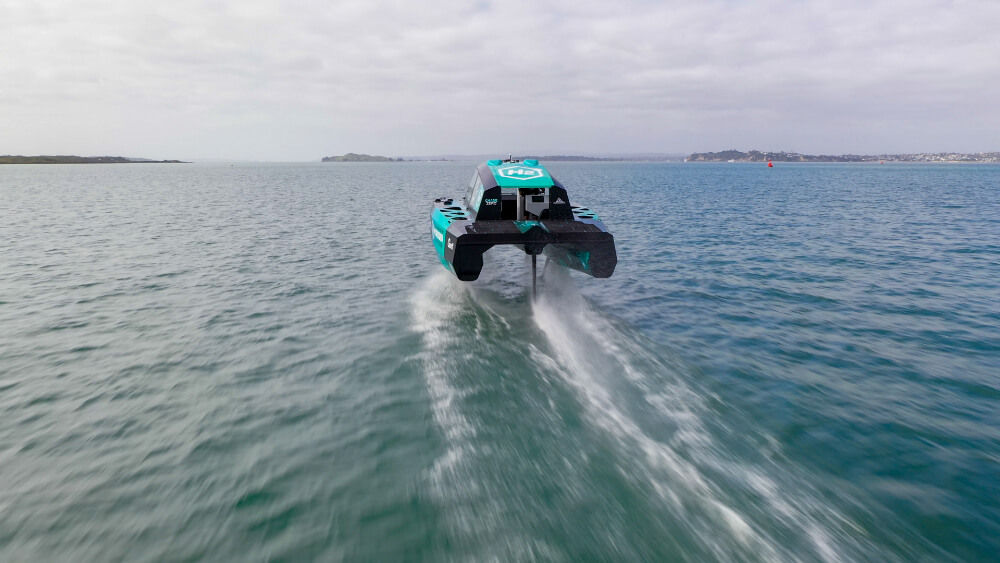
TOYOTA TECHNOLOGY
Toyota, an Emirates Team New Zealand partner for over 30 years played a significant part in facilitating the acquisition of the two all-important fuel cells. Neeraj Lala, Toyota NZ CEO said, “We are supporting our long-term partners, Emirates Team New Zealand by supplying them the hydrogen fuel cell system as a way to investigate the different applications of this carbon neutral technology. We have secured from Toyota Motor Corp. two prototype units for the ETNZ trial that were still in their preproduction phase.
“We are excited to see the boat go in the water as a demonstration of the capabilities of Toyota’s hydrogen technology. Toyota is focused on helping advance hydrogen technology and its development in New Zealand through commercial partnerships, such as the ETNZ fuel cell chase boat, under our Toyota Hydrogen Projects banner.”
The 10m Chase Zero has an approx 5200kg displacement, with a cruising speed of 30-35 knots and top speed of around 50 knots. It can carry six crew members with a range of between 150-180km generating approximately 440kW peak power via a 400V DC system powered by the Hydrogen Fuel Cell.
The four hydrogen storage tanks onboard from Hexagon Purus store the hydrogen gas at 350bar while the propulsion is via a Mercury bottom end propeller which is embedded within the foils. The tanks are made from a plastic liner, wrapped in carbon fibre for the required strength. Each is capable of holding 8kg, giving a total capacity of 32kg when full.
The two 80kW Toyota hydrogen fuel cells, one in each hull, provide most of the energy needed to power the boat. The hydrogen gas is passed through a catalyst which strips the electrons away from the H2 molecules. These electrons are used to power the boat and then return to the positively charged H+ ions which are combined with oxygen from the air, leaving nothing but pure H2O to exit the exhaust of the fuel cell. This electricity is then either stored in the battery, or fed directly into the electric motors that provide the propulsion to the boat.
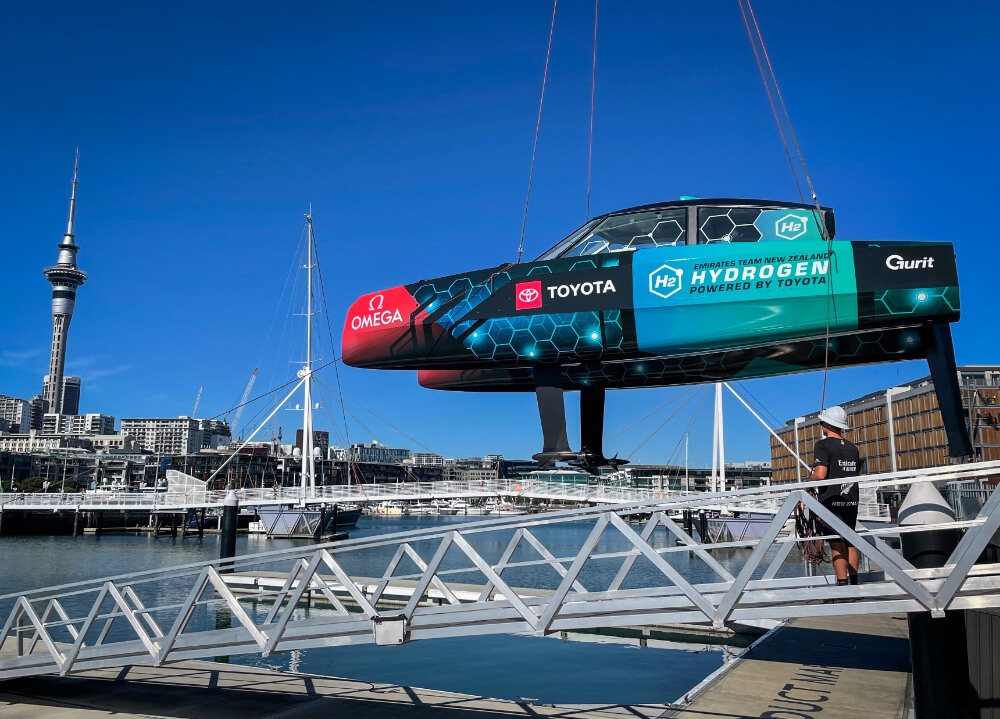
The batteries onboard also play a critical role in allowing Chase Zero to accelerate and achieve its top end speeds as Electrical Engineer Michael Rasmussen explains, “The fuel cells provide the majority of the energy, however the battery acts as a filter for the faster changes in power demand. The response time of the fuel cell is much slower than available from the battery, so during fast changes in demand the battery supplies the difference as a compromise in performance was not an option.”
The battery is also used to achieve the higher speeds. The boat can cruise at approximately 30kts with the 160kW generated from the fuel cells, but to achieve the higher end speeds up towards 50 knots Chase Zero can draw from the batteries as well to bump this up to around 420kW for shorter periods. The fuel cell will then re-charge the batteries once there is excess power available again.
An integral supporter to the ETNZ Hydrogen project powered by Toyota is Emirates Team New Zealand Sustainability Ambassador and former Chair of Directors, Sir Stephen Tindall, who along with helping to fund the project also believes that strategically clean hydrogen will be a very important part of New Zealand’s green sustainability in future. “Green hydrogen comes from renewable energy like wind, solar and hydro and once the hydrogen is used in the boat, the only by-product is water.” said Tindall. “I believe our ambitious move into hydrogen boats by Emirates Team New Zealand will set the scene for motor driven craft as we did in starting the marine foiling revolution. I am looking forward to seeing millions of hydrogen driven vehicles and boats over the next 20 years.”
THE MAGIC OF FOILING
The design of the foil wings by the Emirates Team New Zealand design team was largely based on AC75 technology and the autopilot which will be used to control the ride height is ETNZ proprietary technology that will be implemented in the new AC40 boats in production.
It is the same harbour that in late August 2012 saw Emirates Team New Zealand first introduce foiling to the world of the America’s Cup in their AC72 catamaran yacht, which changed the face of sail racing globally.

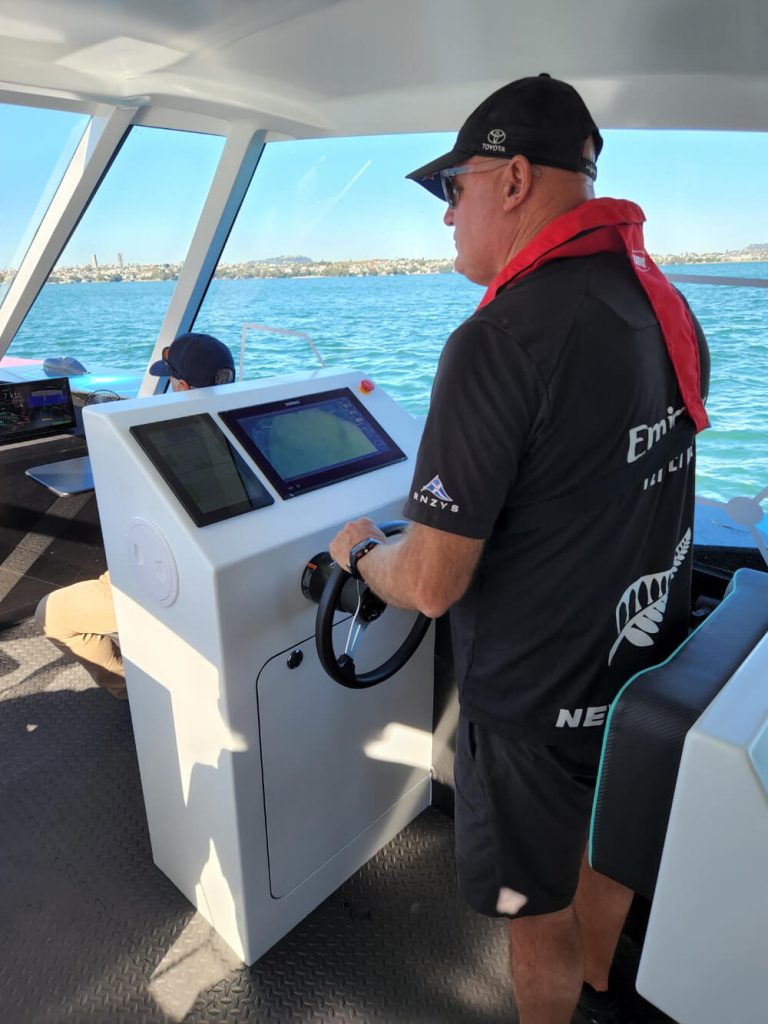
. And now, just under 10 years later the team has introducing hydrogen powered foiling chase boats to the America’s Cup also. Travelling at 50 knots on the water requires a lot of power, and so foiling, like in sailing, was an obvious choice for Emirates team New Zealand
I was fortunate to be one of the first journalists to get onboard Chase Zero to experience what it is like to travel at over 40 knots without leaving a carbon footprint. Zero emissions from green hydrogen.
There is a defined hum from the twin electric motors, but nothing unpleasant. Chase Zero doesn’t rise onto the foils until the boat speed reaches 19 knots. The ride height gradually increases as the boat accelerates and rises on the foils from around .4m to 1.2m in foiling mode.
50 KNOTS
Cruising at 30 knots the ride is amazing, with no hull noise or wave effect. Put the boat into a 30 knot turn and it stays reasonably level and if it goes too far, the auto trim system comes into play and corrects it all. This is a very very automated boat, with the driver, simply working the throttle and steering. Trim angles are down to the computer.While Chase Zero has touched 50.3 knots, we saw 43.4 knots with a ride height of 0.70m with an H2 level of 71%. Chase Zero drops off the foils at 18 knots.
Along with the speed testing, the range of Chase Zero with full tanks had to be tested and verified. It proved to be a long day for Skipper Chris ‘Curly’ Salthouse.“We filled the tanks up to 96% so we wanted to take Chase Zero out to test its cruising range and
reliability at the same time. So we set out to circumnavigate a few islands around the Hauraki Gulf, we just didn’t expect to be cruising for as long as we did.
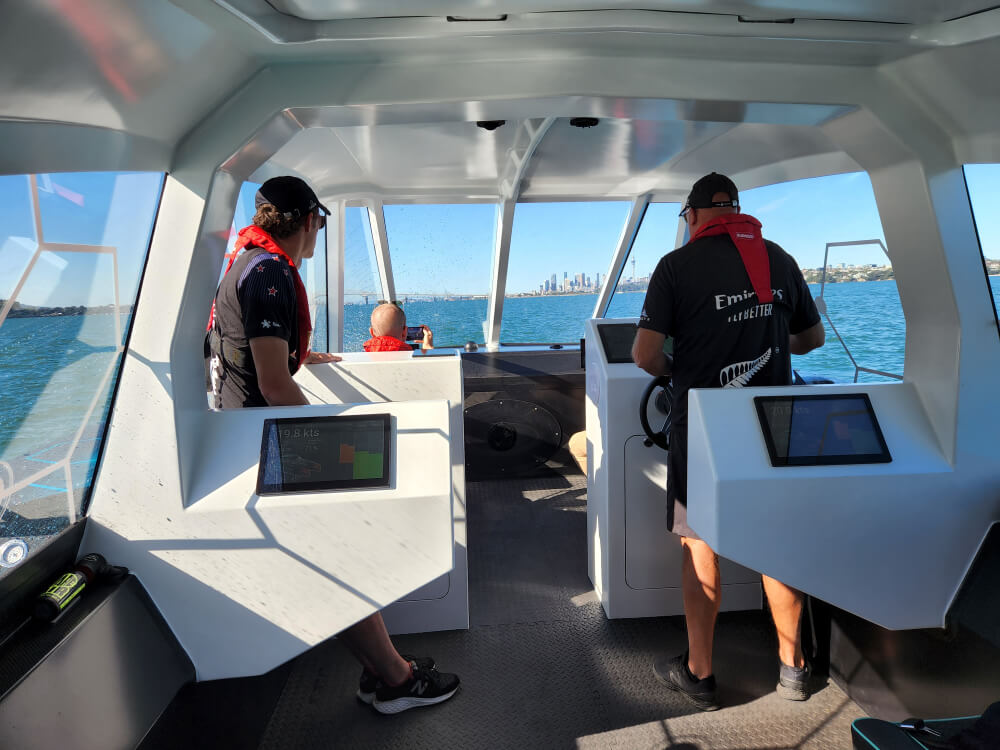

We ended up motoring for nearly 6 hours in the end and covered 280km (or 151.2 nautical miles) at an average speed of 28.3 knots and still had about 10% gas left in the tanks.”
To put that into perspective if Emirates Team New Zealand had done the same day’s run in a regular 11m chase boat with twin 250hp outboards on it, they would have used 140 litres of petrol an hour @ 28knots, which would have equated to 825 litres total. Unfortunately a regular 11m chase boat only has an 800 litre Tank so it wouldn’t have even made it back or matched Chase Zero’s range without running out of gas.
The range test provided the engineers with valuable data that has been crunched and now the team can accurately assume that the range of Chase Zero on four full 8.4kg tanks of hydrogen gas is330km’s (or 178.19 nautical miles) at the cruising speed of 28-30 knots of boat speed.One of the main criteria for going hydrogen was that if the boat was 100% electric it would be far too heavy to achieve the required 40 knots and the distance between charge ups would be minimal. While the hydrogen fuel scource produces 35kW per kilogram of hydrogen, Lithium Ion batteries would only produce around 1.2kW per kilogram.
ZERO CARBON EMISSIONS
Emirates Team New Zealand COO Kevin Shoebridge, says, “This really is a considerable step forward in clean renewable energy in the marine industry. The Chase Zero in foiling mode looks like a futuristic power boat, but then you actually need to remind yourself that there are zero carbon emissions. It is basically water vapour coming out of the exhaust which is amazing when considering the positive environmental impact that can be made by reducing emissions from regular boat engines.
When acknowledging what the Chase Zero team have achieved in the past 9 months Emirates Team New Zealand CEO Grant Dalton said, “The team have really delivered under all sorts of Covid challenges and pressure to get this boat designed, built, commissioned and foiling in such a small timeframe. And when I say ‘the team’ that includes the essential partners we have bought together as well like Toyota, Global Bus Ventures, Gurit and several others.”
“This project is all about proving how we can influence the global marine industry by producing a prototype hydrogen powered foiling catamaran. And today has been a huge progression towards that. We have no doubt there will be a lot of entities and organisations that will be watching and thinking how the technology can be adapted to their specific use case or ideas.

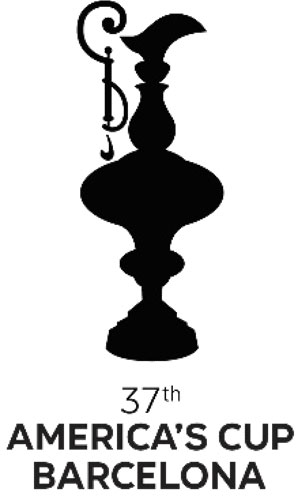
Dalton added that “Emirates Team New Zealand continues to be at the forefront of innovation and we intend to really drive the development curve of new and clean technology in the marine industry. It is our hope that we can make a seismic shift into hydrogen power and an emission free statement for the industry. This initiative is not without risk as we have very specific operating criteria within the team and the America’s Cup, so it is not a small undertaking.
INEOS Team UK and Challenger of Record Team Principal Skipper Sir Ben Ainslie is behind the push into Hydrogen power on the water, “For nearly two centuries the America’s Cup has pushed the boundaries in design and engineering, whilst ensuring innovation benefits the wider marine industry. With so much investment in hydrogen across the world, shifting to foiling chase boats, powered by hydrogen could well prove to be a sustainable and practical solution for the future of the marine industry, while supporting the AC75’s which are reaching speeds in excess of 50 knots.”
Terry Hutchinson, Skipper and Executive Director of New York Yacht Club American Magic, the U.S. Challenger for the 36th America’s Cup said, “It is impressive to see how innovation remains the driving force behind the America’s Cup after 170 years of racing. We support the Defender’s efforts to apply their performance innovation skills to sustainable and environmentally friendly technology.”
Technical Director Hugh Reynolds is leading the project for AFCryo, “As an organisation we have been working in cryogenics, and clean-tech solutions, for 17 years. We are a strong proponent of green hydrogen and are manufacturing hydrogen production systems in New Zealand. It is exciting to work with Emirates Team New Zealand on such an aggressive development curve and timeline to deliver on water hydrogen storage and power. The opportunity to contribute to such an exciting project aligns perfectly with our view of sustainable future energy”.
Chase Zero Key Specifications
- LOA: 10.0m
- Beam: 4. 5m
- Draft: 2.2m
- Foil configuration: Primary π-foil, single T-rudder
- Displacement: 4800kg
- Fuel cells: 2 x Toyota 80kW
- Motors: 2 x 220kW
- Batteries: 2 x 42kWh
- Tanks: 4 x 8kg Hydrogen @ 350bar
- Cruise Speed: 30kts
- Range: 180km (typical chase boat working cycle)
- Top Speed: 50kts




